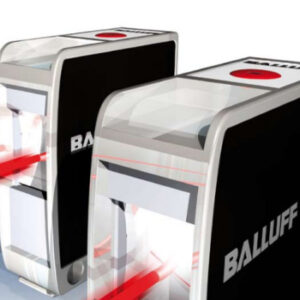Currently Empty: $0.00
Gordy’s Sensors presents a laser sensor for distance measurement at feasible prices

Laser Distance Sensors or monitors, also known as optical distance sensors come with a high resolution of up to 2 μm and measuring distances of up to 13 m to provide accurate distance information. These unique instruments are designed specifically for non-contact distance measurements and offer the finest measurement performance for authentic processes and greater system availability.

Thus, such laser sensors present precise distance with optimal accuracy in position and space computations. Such laser sensors possess the attribute of accurate direction, optimal luminosity, and proper monochromaticity. It is extensively utilized in industrial and agricultural production, along with military, medical and health sectors, and also in scientific research. Therefore, for catering to offer precise measurement with maximum accuracy, it is a better approach to buy such laser sensor for distance measurement only from Gordy’s Sensors.
How do the Laser Sensors Function to Measure Distances?
Laser sensors are unique devices to measure distance accurately without any physical contact, wherein it uses laser technology composed of laser, optical parts, and photoelectric devices. Herein, it easily converts the measured physical dimensions of length, speed, and flow into optical signals, and subsequently utilizes the photoelectric converter to transform such optical signage into electrical signals.
With the support of filtering, amplification, and amendment of correlated electrical circuits, the output signals can be obtained, helping to measure the distance. In this process, such a laser distance meter directs a pulse of laser light to the target area and quantifies the time taken for the reflection of light to come back. The in-built adjustment permits the device to add or subtract, or compute areas and volumes, and also to triangulate or locate the precise distances.
Unlike, the old-fashioned tape, such laser distance meters are highly functional offering excellent measurement capabilities with speed, preciseness, safety, flexibility, and utmost satisfaction. Sending a highly strong and focused pulse of light to the target area, this instrument detects the reflection, wherein it quantifies the time taken in between these two events, and finally converts the same into a distance.
Such laser distance measuring devices utilize distinct quantifying techniques for measuring distances. Among these the laser sensor functions by the formula of D=ct/2, in which case c equals the speed of light and t equivalents to the total time taken for the return journey in between the meter and the target area.
In this approach, the lasers offer the most precise measurements, wherein discrete types of lasers are applied for quantifying large or small expansions. Besides, in various industrial, agricultural, health, research, and defense-related distance measurements, the technique of triangulation is used by laser sensors. This triangulation or course-plotting is a specific geometric method, proving to be extremely beneficial for quantifying distances between 1mm to several km, using the energetic diffuse technology.
Yet another system is used by the laser sensors, which is known as pulse measurements, which depends on the computation of time of a laser pulse from the quantifiable device to the target and return. This technique thus is also called the time of flight measurement, in which case the typical preciseness range from a few mm to cm.
What are the Cardinal Premiums provided by the Laser Sensors in Estimating Distances?
Among the distinct mileages gained by utilizing the laser sensors for evaluating distances is its optimal degree of accuracy. Unlike the conventional method of measuring with tapes that mostly create an error of some type, the lasers devices offer to-the-point preciseness, which is crucial for any industrial applications, such as building roads, bridges, and dams.
 As these lasers are highly resilient, they are built to last for a longer period. Besides, such laser distance meters are shockproof, and can easily handle to function in any harsh terrains and extreme climatic conditions. In this case, they do not get dysfunctional by constant sunlight and offer exact results.
As these lasers are highly resilient, they are built to last for a longer period. Besides, such laser distance meters are shockproof, and can easily handle to function in any harsh terrains and extreme climatic conditions. In this case, they do not get dysfunctional by constant sunlight and offer exact results.
Moreover, such laser distance detectors can also function in trenches and deep holes under the ground offering precise distance estimations for underground wiring purposes. In addition, operating with a laser sensor will also help in mitigating the cost of labor, as it is only a single-person job, therein reducing the overall project overheads.
Final Verdict
Acknowledging the innovative technologies bringing in profound changes in our daily lives, usages of such exclusive laser sensor for distance measurement can be the most justified approach for clients from industrial or allied sectors in gaining optimal accuracy. Hence, such hand-held instruments can be bought from Gordy’s Sensors, established in 2008, possessing extensive expertise in sensing, monitoring, and measuring instruments at the most economical rate.
